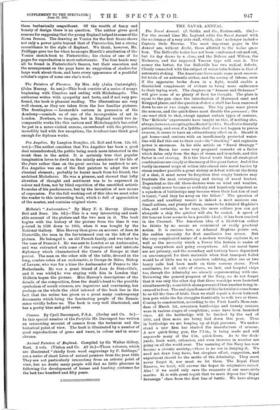Holbein's "Ambassadors." By Mary F. S. Hervey. (George Bell and
Sons. 10s. 6d.)—This is a very interesting and read- able account of the picture and the two men in it. The book begins with the history of the picture from the time it was punted in 1533 down to 1890, when it was bought by the National Gallery. Miss Hervey then gives an account of Jean de Dinteville, the man in the fur-trimmed coat on the left of the picture. He belonged tc an old French family, and was tutor to the sons of Francis I. He was sent to London as an Ambassador, and was entrusted with some of the complicated and intricate diplomacy which characterised the Courts of Europe at that period. The man on the other side of the table, dressed in the long, sombre robes of an ecclesiastic, is George de Salve, Bishop of Le,vaur, who was for a time the Ambassador of France to the Netherlands. He was a great friend of Jean de Dinteville's, and it was while' he was staying with him in London that Holbein began the picture. Miss Hervey's descriptions of the details of the composition, from the death's-head to the possible symbolism of occult sciences, are ingenious and convincing, but perhaps on the whole the chief interest of the book lies in the fact that the writer has given us a great many contemporary documents which bring the fascinating people of the Renais- sance vividly before us. The book is very well illustrated, and has a pretty blue and gold cover.




















































 Previous page
Previous page